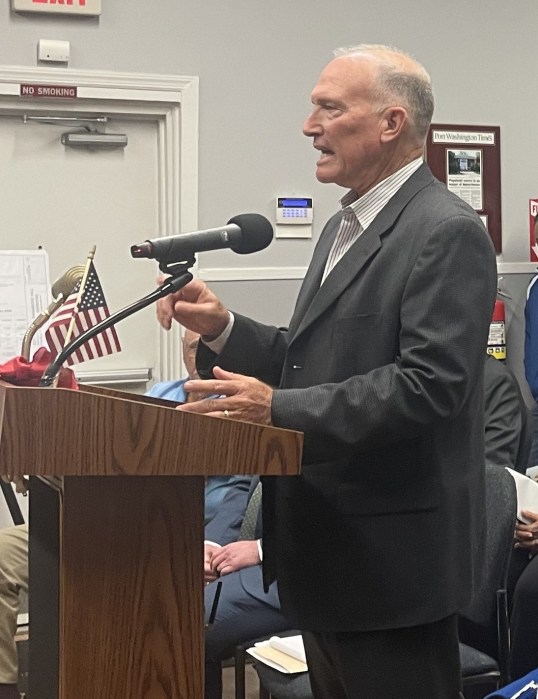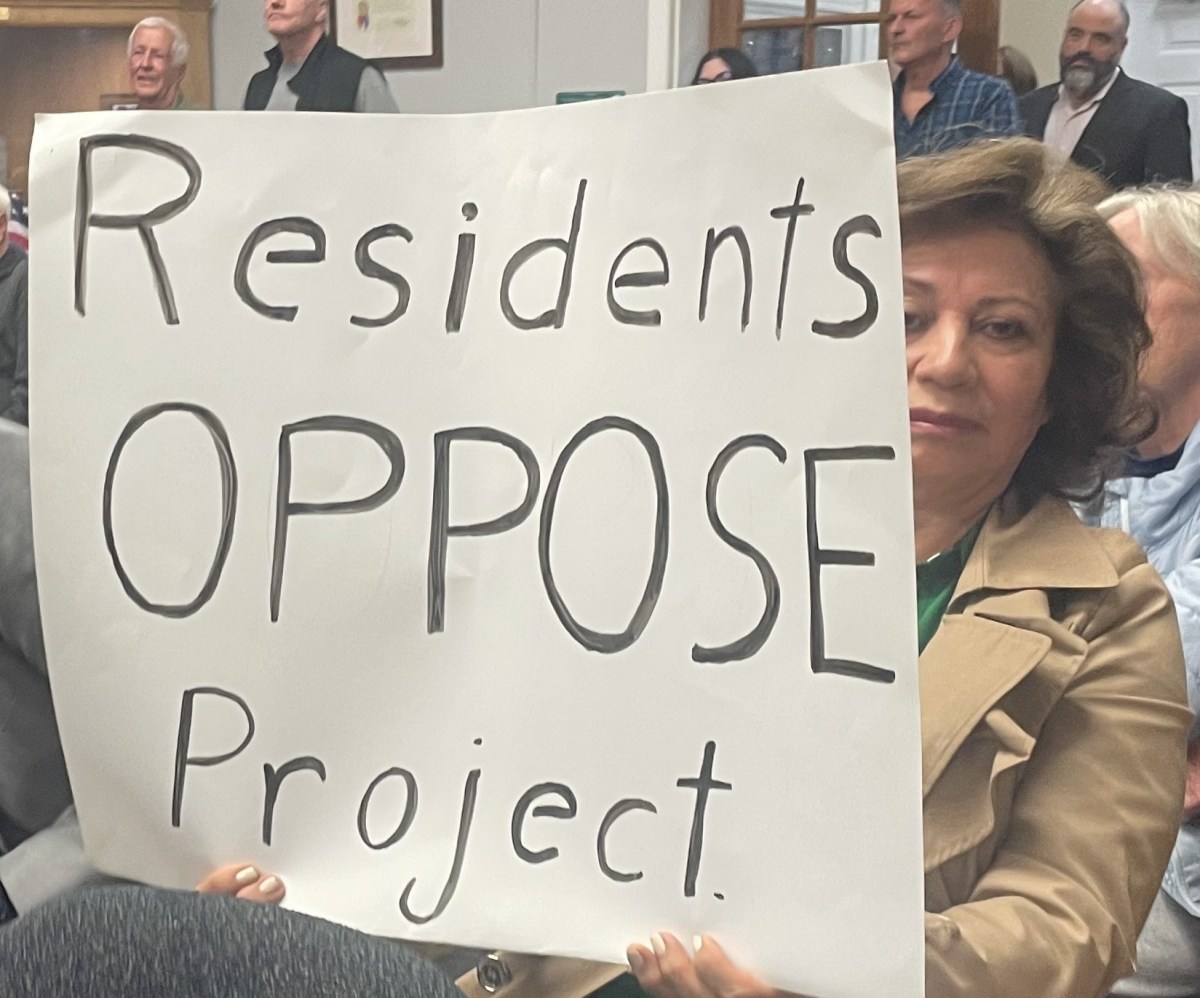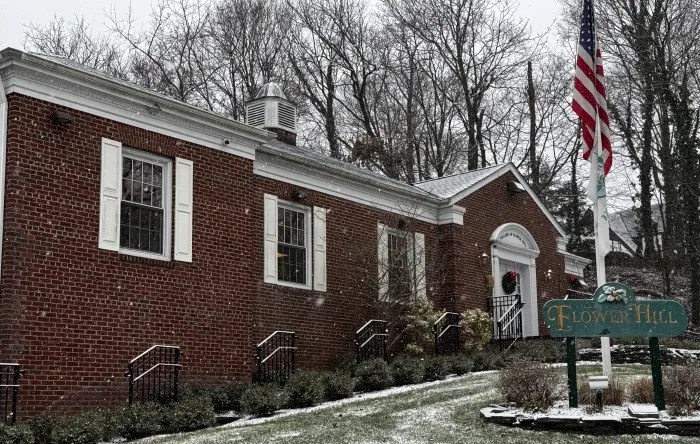Controversy continues to swirl around the proposed 49-unit apartment development at 30 Sagamore Hill Drive, as residents packed the Thursday, May 28 Manorhaven board meeting to express concerns over environmental safety, infrastructure strain, and community impact.
The board ultimately tabled the site plan decision, scheduling a public forum for June 19 and a follow-up vote on June 25th.
Dozens of local residents spoke out against the proposed project, with many calling for a building moratorium not only for this property but more broadly across the village. They cited fears of overdevelopment, increased traffic, environmental risks, and a lack of transparency in the approval process.
“What will we gain as a community?” resident Kris Murphy asked.
Mayor John Popeleski defended the impact of the project.
“You’re gonna bring revenue into the village, rental registrations, local shop owners, cleaners, and restaurants will gain,” Popeleski said. “The marina will gain. It’s about bringing revenue.”
Echoing the call for cautious progress, Popeleski addressed the residents directly.
“We’re going to be doing a moratorium starting with the two-family houses and single-family homes in R2. We will have public forums in respect to media development. I understand everyone’s concern,” Popeleski said. “My vision is to see some restaurants there, something that will benefit the village, not just another building. We’ll sit as a board and take resident input. It’s not a dead issue. I guarantee that. It takes time, but it will happen.”
The residents’ major point of contention was the development’s environmental impact, especially given its proximity to the former Thypin Steel site, which underwent extensive remediation due to past contamination.
Ken Kraft, a former village trustee, said contamination was found during past testing of nearby properties, including the adjacent 22 Sagamore Hill Drive.
“This is an industrial area, whether it’s the marina or this that they’re gonna try and build onto. All of these places have to have industrial waste,” Kraft said.
“This place down here has become sort of a toilet bowl,” Kraft added. “If people are going to live here, they need to know, whether it’s real estate or the village, they’re moving into a place that has some items.”
Philip Butler, attorney for the developer, tried to assuage public concern.
“We heard a lengthy testimony from Mr. Furman about the environmental diligence done on this property,” Butler said. “Environmental diligence was conducted. No contamination was found, but if it is encountered, there is a plan to manage it under the soil and water management plan. The idea that remediation will cause more harm is absurd. The Brownfields program exists to eliminate contamination.”

Butler also defended the project’s scale, stating that 49 units is not considered high-density by industry standards.
“This is the E1 zoning district, not R1 or R2. This zoning has been in place for 20 years. We followed every required step and engaged with the Zoning Board of Appeals multiple times,” he added.
Regarding infrastructure concerns, Butler maintained that utilities would be addressed before construction. “If we don’t have sewer or water, we won’t get permits. That risk is on my client. The process was not rushed. We followed every code requirement.”
Scott Furman, partner at the environmental law firm Sive, Paget & Riesel, further detailed the environmental diligence. He explained that previous studies showed contamination plumes from the Thypin Steel site moving away from the proposed development area. “There is no meaningful evidence that the Thypin Steel site could impact conditions at 30 Sagamore Hill Drive,” Furman stated.
Still, Furman emphasized precautionary measures. “We recommended a soil and groundwater management plan, along with an engineered vapor barrier resistant to the contaminants found at Thypin. Even though residential units are elevated above a ventilated parking garage, we are specifying waterproofing materials resistant to possible contaminants, even if none have been detected.”

He also noted that excavation would be extensive due to the below-grade garage, and that Roux Associates would be on-site during soil removal to ensure conditions align with expectations. An underground storage tank is expected to be found and removed under supervision of the Nassau County Department of Health.
“The important thing to note is we have taken a posture of protection even in light of evidence showing no significant contamination,” Furman said. “You just can never be 100% sure.”
Residents raised broader issues with the project, including traffic and parking. While Butler stated a certified traffic study found the development would not significantly increase local traffic and that the parking provided was adequate, several residents voiced skepticism.
Others were frustrated by what they viewed as a lack of public outreach. Butler defended the process.
“If we had been asked to conduct community outreach, we would have. We do that all the time. But we weren’t asked. We didn’t cut corners,” said Butler.
Some residents worry that overdevelopment could threaten the village’s infrastructure, character, and environmental health.
Sherry Dunn, a Manhasset Isle resident, said, “Everybody wonders why cancer rates are sky high on Long Island … Keep digging up all these contaminants.”
Many in attendance called for the village to develop a comprehensive plan for the future of Manhasset Isle, rather than approving projects individually.
Still, the board chose to delay a decision. The upcoming public forum on June 19th will provide another opportunity for residents to voice their concerns. A final vote is scheduled for June 25th.
As the debate continues, the project at 30 Sagamore Hill Drive has become a flashpoint for larger questions about growth, transparency, and the future character of the village. The outcome could set a precedent for how similar projects are reviewed and approved in the years to come.



































